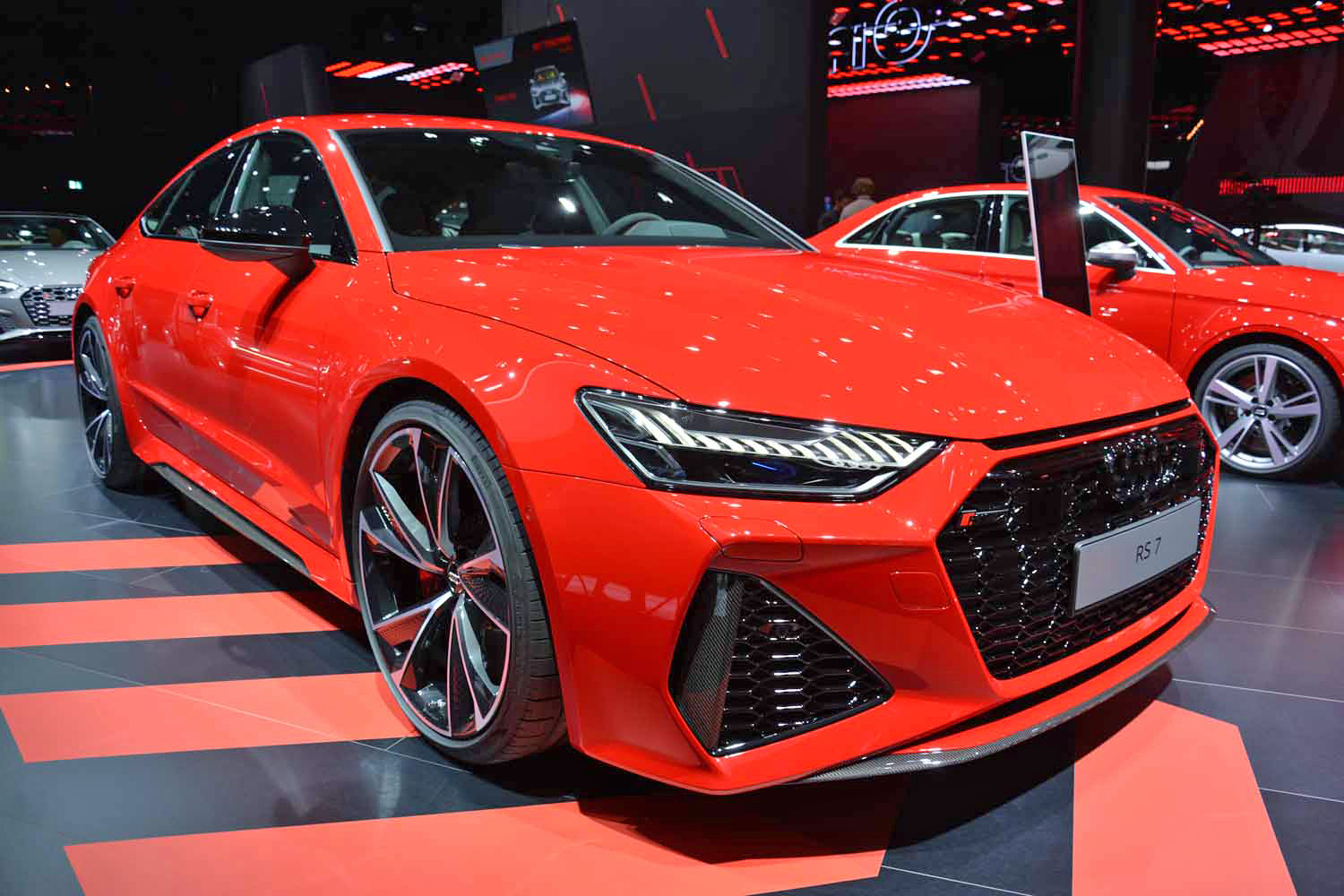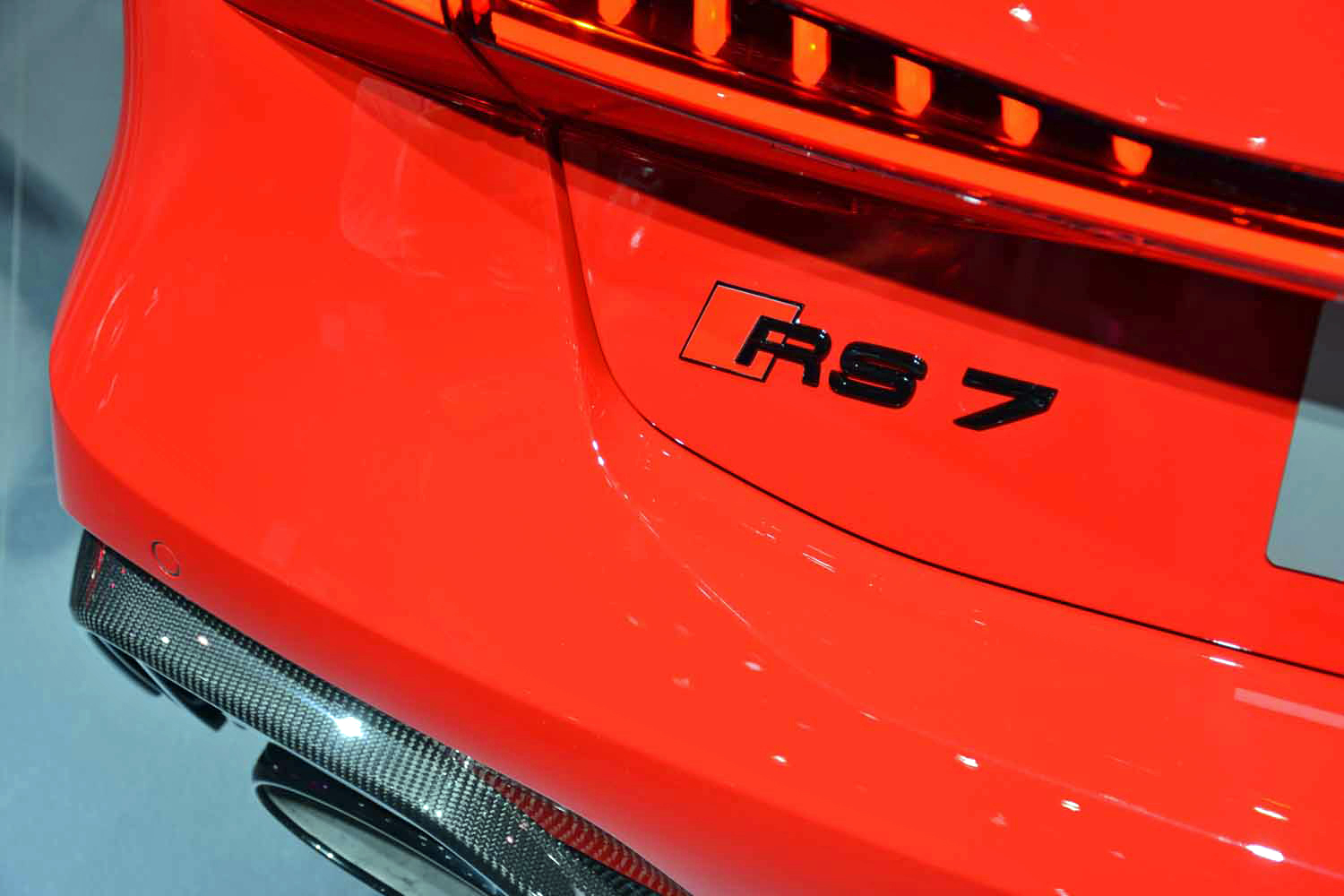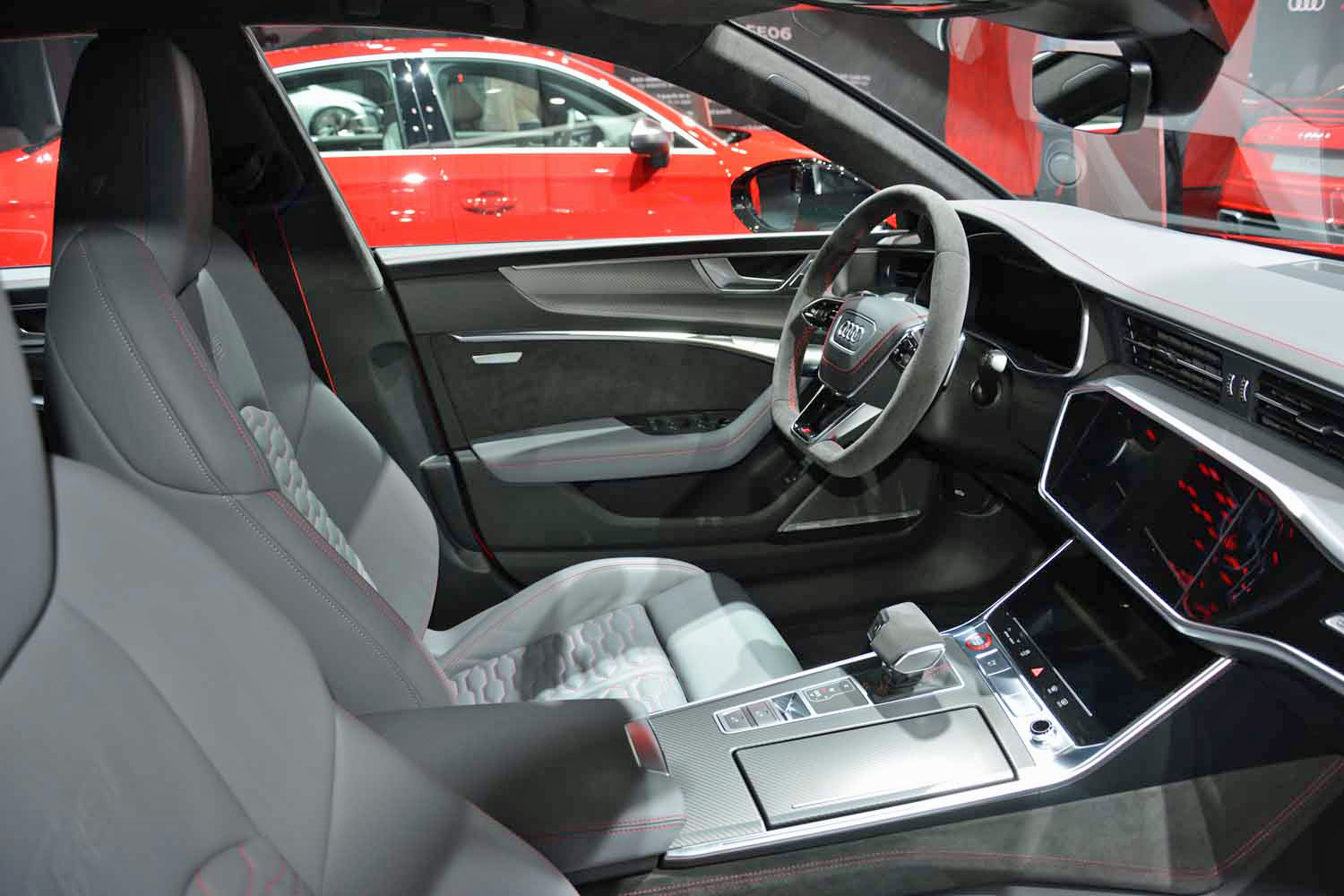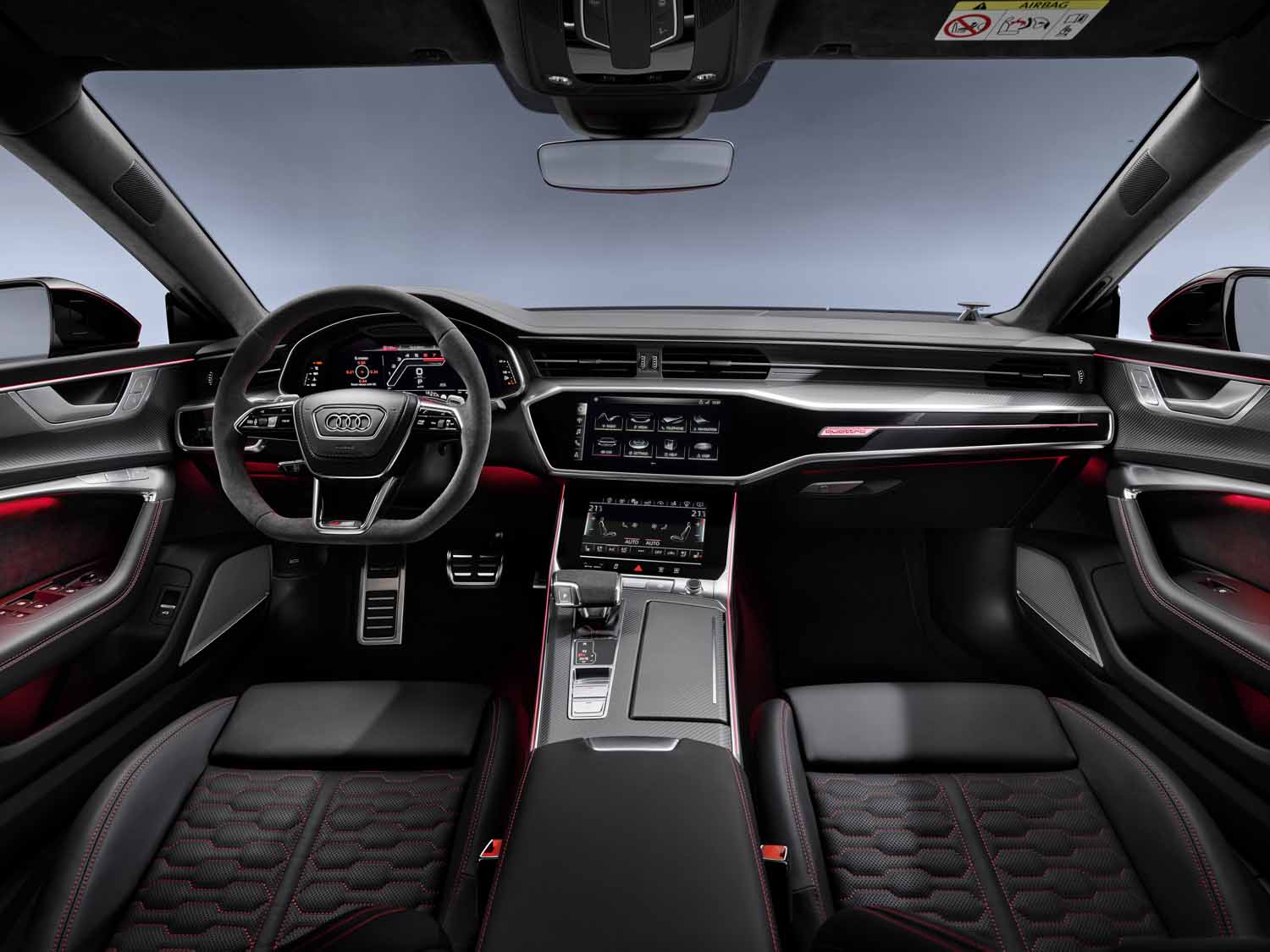Audi Sport introduced the second-generation RS 7 Sportback ahead of its public debut at the 2019 Frankfurt Auto Show. The four-door fastback builds on the strengths of the original model with a more muscular design, improved technology inside, and a new powertrain that simultaneously cranks the power and efficiency dials thanks to mild hybrid technology.
The first RS 7 stood proud as Audi Sport’s style icon, so reinventing the model was easier said than done for the company’s designers. They knew it had to wear a more aggressive front end, customers asked for a sportier look, so they removed the chrome found on the A7, and chiseled bigger air vents into the front bumper. The Quattro that dominated the rally scene during the 1980s inspired stylists during the design phase. “I bet you’ve never seen a race car wearing chrome trim,” pointed out Tobias Höss, one of the designers who worked on the RS 7, as he gave Digital Trends a walk-around of the car.
“I bet you’ve never seen a race car wearing chrome trim.”
Punched-out wheel arches create an additional visual link between the RS 7 and the Quattro, while covering a wider track that improves handling. Twenty-one-inch wheels come standard, and 22-inch wheels are available at an extra cost.
The front passengers sit on sport seats, and much of the trim is specific to the RS 7, but the connectivity features are shared across the A7 line. That’s not a bad thing; Digital Trends loved the Virtual Cockpit (Audi-speak for a digital, configurable instrument cluster) when we drove the A7, and we’ve praised the MMI Touch Response infotainment system in the past for its intuitiveness, its sharp graphics, and its quick response time. It’s straightforward to use in spite of the wealth of information it contains, and we like being able to move the home menu’s icons around like on a smartphone.
The original RS 7‘s biggest problem was its lack of practicality. It was only available with four seats, so it wasn’t as spacious inside as it looked. The new model is finally fitted with a three-person rear bench, though the four-person configuration remains available. Trunk space checks in at 18.9 cubic feet with both rows of seats left up, and a crossover-like 49.1 cubic feet with the rear seats folded flat. The sloping roofline gets credit for the RS 7’s cavernous cargo compartment. Michael Binder, the RS 7’s product manager, told Digital Trends that increasing daily usability was a key focus point during the development process, and it looks like his team achieved its goal.
The RS 7 carries on with a powerful V8. Shared with the latest RS 6 Avant, the engine is a 4.0-liter that’s twin-turbocharged to send 600 horsepower and 590 pound-feet of torque to the four wheels via an eight-speed automatic transmission, and Quattro all-wheel drive. The system splits power variably; it channels up to 70% of the eight’s output to the front wheels when needed, or up to 85% out back. Audi quotes a 0-to-62-mph time of 3.6 seconds, and an electronically limited top speed of 155 mph.
Performance is the engine’s calling card, but engineers didn’t forget about efficiency. The 48-volt mild hybrid system recovers some of the energy generated while braking, channels it to a lithium-ion battery pack, and uses it to power the stop-start system. Cylinder-on-demand technology turns the V8 into a fuel-sipping four-cylinder. The RS 7 promises to deliver better fuel economy than you’d reasonably expect from a 600-hp machine, but official numbers won’t be published until closer to its on-sale date.
Technology shaped the way the RS 7 drives, too. The standard air suspension obeys commands. The driver can tap the touchscreen a few times to dial in a firm ride, a relatively soft ride, or find a middle ground between the two. Meanwhile, progressive steering gradually increases the effort required to turn the wheels as the RS 7 builds up speed. It’s effortless to park around town, yet tight to drive around corners. Buyers also have several extra-cost features to choose from, including a sport suspension that promises to keep body roll at bay, and a trick four-wheel steering system.
The second-generation Audi RS 7 will begin arriving in European showrooms during the first quarter of 2020, and it will make the trip to the United States shortly after. Deliveries will start during the 2020 model year. Pricing information hasn’t been released yet; for context, the outgoing, 560-hp model started at about $115,000.


























